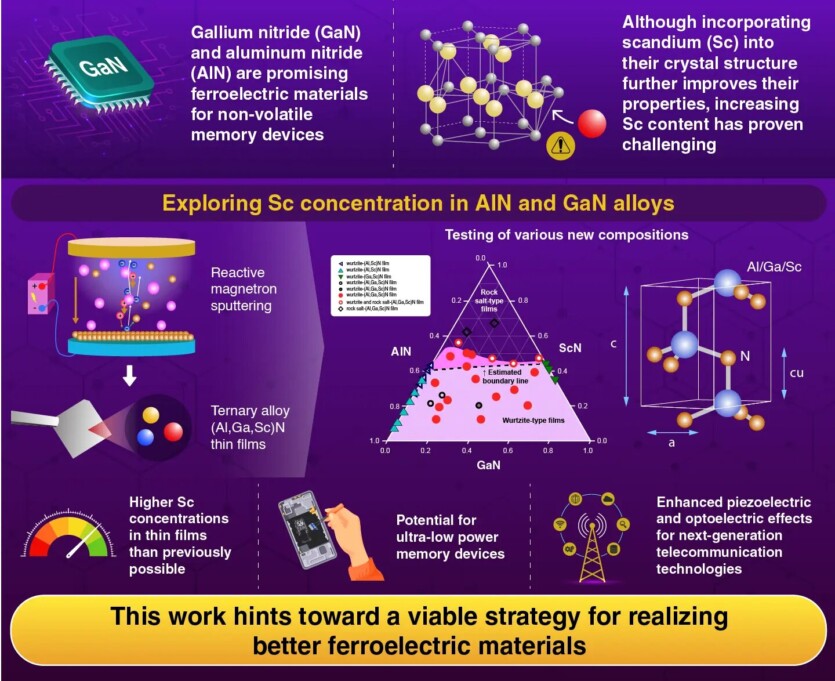
Japanese researchers from The Institute of Science in Tokyo was able to create a nanofilm with a record high content of scandium in an alloy with gallium nitride and aluminum nitride, paving the way for the development of low-power storage devices.
In addition to efficient storage of information, these films have the potential to be used as 6G communication interference filters and optical computing. As electronic devices become smaller and smaller, there is a growing demand for storage technologies that consume less power and store more data.
To solve this problem, we created non-volatile ferroelectric storage devices, which, thanks to their internal electrical polarization, store information without the need for a constant power source. This allows for longer battery life and more complex computing in mobile devices.
Gallium nitride (GaN) and aluminum nitride (AlN), materials that have already are used in LEDs, have unique crystal structures in which the positive and negative charge centers are naturally shifted. This shift creates switchable polarization that can be controlled by an external voltage.

The addition of scandium to these structures can significantly reduce the operating voltage and enable operation at extremely low power. However, the stability limitations of gallium nitride and aluminum nitride have made increasing the scandium concentration quite challenging.
A group of Japanese researchers led by professor Hiroshi Funakubo has made significant progress by synthesizing thin films gallium nitride and aluminum nitride with a record high scandium content. First, the scientists used reactive magnetron sputtering — physical vapor deposition method thin films on platinum- and titanium-coated silicon substrates.
By carefully adjusting the sputtering and power parameters, they synthesized a diverse range of ternary alloys with different proportions of each element. After that, the scientists carefully studied the resulting films using X-ray diffraction to determine their crystal structure. To study the structure of these nanofilms at the micro level, we used electron microscopy. The researchers also conducted electrical measurements to assess their ferroelectric and dielectric properties.
Thanks to this systematic approach, the researchers were able to compile «phase diagram» of the AlN-GaN-ScN system, opening a new area for the ferroelectrically active wurtzite crystal structure at a higher Sc content in the presence of a small fraction of gallium. As a result, a significant reduction in coercive field of the material (Ec ) — the electric field required to switch the polarization. The researchers observed a significant decrease in Ec from 5.8 MW/cm to 1.8 MW/cm with an increase in the Sc ratio.
The achieved voltage reduction can lead to lower power consumption in memory devices, solving one of the most pressing problems in modern electronics. In addition to memory applications, these new ferroelectric films have also demonstrated excellent piezoelectric and optoelectric properties.
«These properties open up potential applications in high-frequency noise filters and ultra-low-power optical computing systems, which are required for next-generation 6G smartphones and ultra-low-power optical computing devices», — explains Hiroshi Funakubo.
The results of the study are published in the journal APL Materials
Source: TechXplore

Spelling error report
The following text will be sent to our editors: